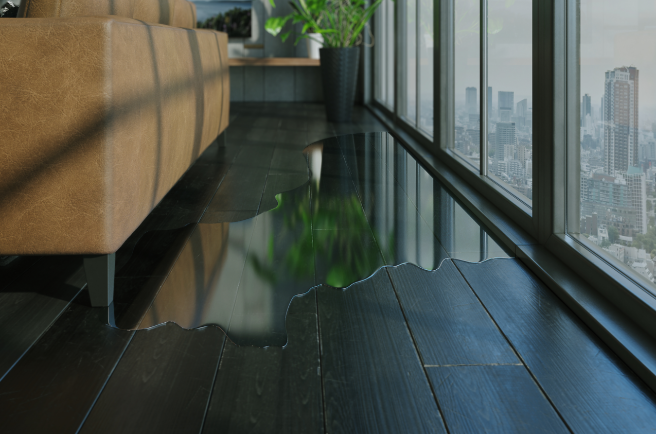How to Dry Out Your Home Faster After a Flood
Flooding can turn your home upside down in a matter of hours. Whether it’s from a burst pipe, a storm, or a rising river, the aftermath is overwhelming. But once the water recedes, the real work begins. Drying out your home quickly is essential—not just for comfort, but to prevent mold, structural damage, and long-term health risks. Here’s how to speed up the drying process and get your home back on track.
Start by Removing Standing Water Immediately
The first step is to get rid of any standing water. The longer it sits, the more damage it causes. If the flooding is minor, you can use wet vacs, buckets, or mops to remove water manually. For deeper flooding, consider renting a sump pump or calling in professionals. Time is critical here. Every hour counts when it comes to preventing mold growth and wood rot. Once the bulk of the water is gone, you’ll be able to assess the damage and move on to drying out surfaces.
Improve Airflow Throughout the House
Airflow is your best friend during the drying process. Open all windows and doors to let fresh air circulate. Use fans—especially high-powered ones—to push moist air out and bring dry air in. Position fans strategically to create cross-ventilation. If your HVAC system is safe to use, turn it on to help regulate humidity. Ceiling fans, box fans, and even bathroom exhaust fans can help move air around. The goal is to keep air moving constantly so moisture doesn’t settle into walls, floors, or furniture.
Use Dehumidifiers to Pull Moisture from the Air
Even after the visible water is gone, moisture lingers in the air and inside materials. Dehumidifiers are essential for drawing out this hidden dampness. Place them in the most affected rooms and let them run continuously. If possible, use commercial-grade dehumidifiers—they’re more powerful and can handle larger spaces. Keep doors closed in rooms with dehumidifiers to concentrate their effect. Monitor humidity levels with a hygrometer and aim to keep them below 50%. This helps prevent mold and speeds up drying.
Remove Wet Materials and Damaged Items Quickly
Wet carpets, rugs, insulation, and drywall act like sponges. They hold moisture and slow down the drying process. Remove and discard anything that can’t be salvaged. This includes soaked furniture, mattresses, and paper goods. If you’re unsure whether something is worth saving, err on the side of caution. Mold can start growing within 24 to 48 hours. The sooner you clear out wet materials, the faster the space can dry. Be sure to wear protective gear when handling contaminated items.
Clean and Disinfect All Surfaces Thoroughly
Floodwater often contains bacteria, chemicals, and other contaminants. Once the area is dry, cleaning and disinfecting are a must. Use a mixture of water and bleach or commercial disinfectants to scrub walls, floors, and hard surfaces. Pay special attention to kitchens, bathrooms, and any areas where children or pets spend time. Disinfecting not only removes germs but also helps eliminate odors. After cleaning, continue to ventilate the space to help surfaces dry completely.
Call in Professionals When Needed
Sometimes, the damage is too extensive to handle alone. That’s when water damage mitigation services from professionals, like Disaster Recovery Pros, become invaluable. Experts have specialized equipment and training to dry out homes quickly and safely. They can assess structural damage, detect hidden moisture, and prevent mold before it starts. Hiring experts can also help with insurance claims and documentation. Their experience can save you time, reduce stress, and ensure your home is restored properly from the start.
Monitor for Mold and Moisture After Drying
Even after your home feels dry, moisture can linger in hidden places. Keep an eye out for signs of mold—musty smells, discoloration, or peeling paint. Use moisture meters to check behind walls and under floors. If you spot mold early, you can treat it before it spreads. Continue using dehumidifiers and fans for several days after the initial drying. It’s better to over-dry than to risk lingering dampness. Staying vigilant helps protect your home and your health.
Stay Positive and Take it One Step at a Time
Recovering from a flood is never easy, but it’s possible. Focus on one task at a time and celebrate small wins—like clearing a room or restoring power. Lean on friends, neighbors, and professionals when you need support. Your home may look different now, but with time and care, it can feel like home again. Drying out is just the beginning of the recovery process, and every step forward matters.
Final Thoughts
Floods are stressful, but fast action makes a big difference. By removing water quickly, improving airflow, and using the right tools, you can dry out your home faster and prevent long-term damage. Whether you tackle it yourself or call in experts, the key is to stay proactive and hopeful. Your home can recover—and so can you.


